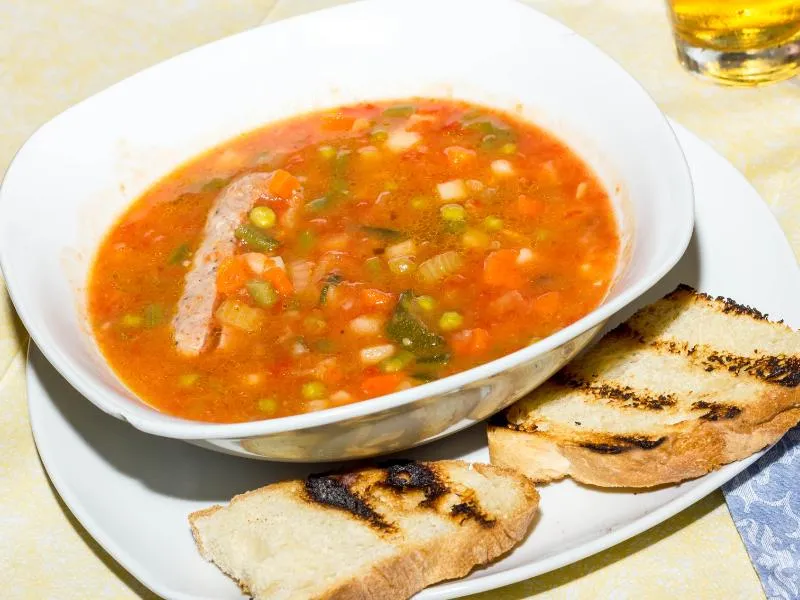Acquacotta
A rustic Tuscan soup of simmered vegetables, bread, and eggs in aromatic broth.
👉 View Authentic Recipe 👈
About This Dish
Acquacotta, literally meaning “cooked water,” originated in the Maremma area of southern Tuscany among coal miners, shepherds, and farmers who needed to create sustenance from minimal ingredients. This humble soup emerged as a creative solution to repurpose stale bread, combining it with seasonal vegetables, olive oil, and occasionally eggs to create a nourishing meal.
The foundation of Acquacotta lies in its simplicity, traditionally featuring onions, celery, carrots, and tomatoes slowly simmered with wild herbs like mentuccia (wild mint) and nepitella (calamint). The defining characteristic is the poached egg and slice of bread placed at the bottom of each serving bowl, which absorbs the flavorful broth and transforms a sparse collection of ingredients into a satisfying meal.
While variations exist across Tuscan villages, particularly in the Maremma region, all authentic versions maintain the dish’s rustic character and economical approach. Originally a dish of necessity for the working poor, Acquacotta has been preserved as a cultural treasure that represents the ingenuity of Italian cucina povera (peasant cooking), where limited resources spark creative, delicious solutions.
🧑🍳 Analyzed by CucinaBot
Why This Dish Works
Acquacotta exemplifies how slow cooking extracts maximum flavor from simple ingredients. The gradual layering of flavors—starting with a soffritto base that develops umami compounds—creates a richly flavored broth from minimal ingredients. The starch from bread thickens the soup while absorbing flavors, and the egg adds protein and a silky texture that enriches the mouthfeel without requiring dairy.
Key Success Factors
- Proper Soffritto: The base of finely diced onions, carrots, and celery must be slowly sautéed until translucent but not browned
- Simmer Time: Allow at least 30-40 minutes of gentle simmering for vegetables to release their flavors into the broth
- Quality Bread: Use hearty, rustic bread that’s slightly stale to properly absorb broth without disintegrating
- Individual Assembly: Adding the egg and bread to individual serving bowls rather than the pot ensures proper texture for each serving
Common Pitfalls
Many modern interpretations over-complicate Acquacotta by adding unnecessary ingredients like beans, potatoes, or excessive herbs, which dilute its authentic character. Another common mistake is using fresh bread instead of stale bread, which creates a mushy texture rather than the proper consistency. The soup should be simple but deeply flavored, relying on technique rather than an extensive ingredient list.
How to Judge Authenticity
When reviewing recipes, look for these markers of authenticity:
- Uses stale, rustic Tuscan bread (not fresh)
- Begins with a proper soffritto base (onions, celery, carrots)
- Contains minimal ingredients (no beans, potatoes, or modern additions)
- Includes the traditional poached egg
- Serves the soup over bread rather than adding bread as a garnish